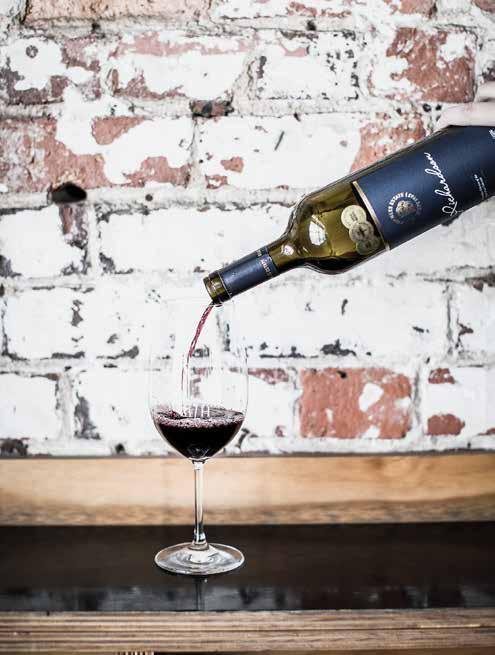
24 minute read
WINE REVIEW
'Tis the Season
Advertisement
Review by Charlotte D. Nay.
Cabernet Sauvignon – this is a wine that means serious business. While everyone and their dog seems to be swilling shiraz on the reg, cab sauv is often relegated to the “only with steak” category, and I am the first to admit that it’s not my top choice for a casual Tuesday lunchtime beverage – but maybe I need to rethink my Tuesday lunchtime beverage priorities. According to the Blue Pyrenees Estate website, the Richardson Cabernet Sauvignon is a “Distinctly ripe cabernet sauvignon, (with) dominant blackberry fruit, leafy notes plus cedary French oak.
The blackberry, green olive and chocmint flavours are all fruit derived. The integration of all these flavours in French oak also adds to the structure and tannin, creating a long savoury aftertaste." First things first. Does the 2016 Blue Pyrenees Richardson Cabernet Sauvignon have a good smell? The 2016 Blue Pyrenees Richardson Cabernet Sauvignon (BPRCS) does have a great smell. It definitely smells like blackberry – kind of like the blackberries you pick when you’ve been trekking through the bush with your grandma all morning and your fingers are nearly frozen off, but you’re a little bit sweaty from all the trekking and there’s kind of a fresh air, “bush” smell mixed in as well. There’s also something that smells a bit minty and a bit chocolatey.
I would give this wine a solid 10/10 for smell alone. Well that’s a truly solid (if somewhat tangential start). Does it have a good taste? Wow. It has a great taste. It is well balanced (#sorrynotsorry wine wankery word), the tannins are velvety smooth, and it tastes like all the good things suggested by that 10/10 smell.
Also, despite that fact that 99.99% of people will tell you to never drink big reds with spicy foods (tannins exacerbate chilli in case you were looking for a scientific reason to back that up), I found this wine tasted even better after the pork belly and pickled pineapple pintxos with chilli jam at Mitchell Harris. Okay, what would you recommend eating with this wine? I would recommend eating a really good cheeseburger with this wine.
Now be honest, did you drink the entire bottle of before noon on a Tuesday?
That is definitely a loaded question. I certainly started drinking the entire bottle before noon on a Tuesday, but I am a professional wine reviewer and sometimes these things are necessary, and I have to take one for the team. I also had help. How much does this wine cost?
Unfortunately (if you’re a wine reviewer like me who can’t afford to buy your own wine), the 2016 BPRCS costs $72 a bottle, which is not unrealistic for a cabernet sauvignon of this calibre. However, you can access it for $60 at the cellar door, or for $45 if you are a wine club member. And is the 2016 BPRCS worth $72 a bottle? If you had read the Barefoot Investor and put $72 in an envelope marked “1x f***king awesome bottle of wine”, then, yes, this wine is definitely worth $72 a bottle. It’s really, really good wine. But as someone who attempts to make a living writing about wine, I understand that not everyone has a spare envelope with $72 in it just for wine, in which case, they probably shouldn’t be drinking cab sauv because it is often expensive.
Would you recommend this wine to a friend?
I would definitely recommend this wine to a friend, but it would have to be a friend who has a higher paying job than mine, otherwise the aforementioned friend would be shocked and horrified that I had recommend they buy a $72 bottle of wine. I would also recommend this wine to my dad because I know he can afford to put $72 in an envelope marked “1x f***king awesome bottle of wine”, and I think this wine would blow his socks off. Overall score 9/10
I don’t think I’ve given anything a 10/10 yet – but there’s a good chance that’s because I haven’t yet convinced the powers that be at this esteemed publication that we should review the 2015 Mitchell Harris Sabre (*hint hint*) and, just for the record, I have been reliably informed that eleventy out of ten is not a reasonable score, no matter how much my dad seems to think it is. So, stay tuned.
Established in 1963 by the famous French Cognac business, Remy Martin, Blue Pyrenees Estate is one the modern-era pioneers of the Pyrenees wine-growing region, which is just 45 minutes north-west of Ballarat.
Where production was once focused on the distillation of wines into brandy from fairly neutral grape varieties, Blue Pyrenees Estate today crafts an extensive range of world-class sparkling wines and table wines from estate grown fruit. Each year the winemaking team, led by Andrew Koerner and viticulturist Sean Howe, select the finest parcels of grapes to craft their most concentrated and characterful red wines. Named after the late, much-loved, and larger-than-life former Remy Australie executive and wine educator, Colin Richardson, the Richardson series of wines is produced only in the very best years.
Vintage 2016 was one of the earliest, warmest, and shortest vintages on record, with just a few weeks separating the picking of both early- and lateripening varieties.
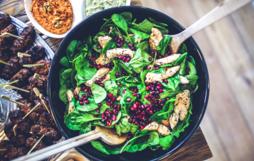
Whilst this proved challenging for some vineyards and wineries to manage, the overall quality of the harvest was very high, especially for red-wine grapes.
And so, on a crisp and sunny autumnal afternoon, I was very excited to be poured a tasting of the 2016 Richardson Cabernet Sauvignon. It’s easy to see why the bottle is decorated with many eye-catching gold medal and wine show trophy stickers. This is a wine that really makes an impression. The colour is a vivid and deep ruby red, and the nose is a constantly morphing and evolving amalgam of bright fruit and French oak-derived notes. This is one of those wines that you can swirl, sniff and ponder all day.
There are the classic blackcurrant, blackberry and subtle mint notes that are a real feature of the best Pyrenees cabernet sauvignon wines, and the winemaking team demonstrates its influence with the seamless integration of classy French oak, bringing archetypal cigar box, cedar, cocoa, and chalk notes to the aroma as well as on the palate. The warm 2016 vintage has delivered perfectly ripe fruit flavours and generous weight in the mouth. It is an extremely elegant wine that has seamless layers of concentrated and bright black fruits and soft powdery tannins that slip and glide effortlessly across the palate.
This wine complemented some delicious pork belly pintxos that we were eating. It would also be perfect with slow-cooked lamb or roast beef. This is a stunning western Victorian red wine and highlights why Pyrenees cabernet sauvignon is one of the unsung and under-appreciated heroes of Australian wine. If any wine can get people drinking cabernet styles again, then this is it.
RRP $72. Available from Mitchell Harris Wines or the Blue Pyrenees Estate cellar door. The Blue Pyrenees Estate cellar door and Cafe Blue are located approximately five kilometres to the west of the Avoca township and the estate is open from 11 am to 5 pm seven days a week. Serving grazing plate lunches each day from midday.
Flavours of the Mediterranean

Entrepreneurship on the curriculum at Ballarat Grammar
Words by Ballarat Grammar.
On a cool Monday evening in May, the Grammar community gathered to launch an exciting new program that will form part of the school’s agriculture elective course for Year 10. The AgriFutures™ startup.business Entrepreneurial Learning in Action program will challenge Ballarat Grammar students to solve real industry problems by creating businesses of their own.
Ballarat Grammar is one of seven schools across Australia to receive part sponsorship to run the program, which is designed to take students on an immersive course into the entrepreneurial start-up environment. Students will meet agricultural innovators and entrepreneurs, researching and developing business ideas to solve some of the challenges facing the Australian agriculture industry. The program has been developed and supported by startup. business, a company that designs practical education for aspiring entrepreneurs, with part funding from the federal government’s AgriFutures™ Australia Entrepreneurial Learning in Action program.
Agriculture teacher Matt Dickinson says the program will build on the students’ existing learning skills and their personal interest in, and connections with, local agriculture. “Changes in technology, markets and climate mean the agricultural sector today must be just as innovative, or more innovative, than other industries such as the manufacturing or service sectors,” Matt said. “The students will gain confidence and resilience, realising that if they take action and are persistent, they can have an important impact on a large scale.”
The course culminates in a pitch competition, where students present their business ideas to a panel of judges.
Pictured: Ballarat Grammar Headmaster Adam Heath addressing the audience at the Agrifutures ™ startup.business launch.
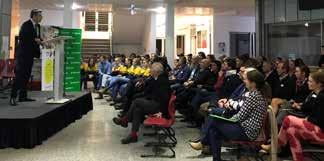
As headmaster Adam Heath explained: “In order to encourage young people to see that they can be entrepreneurial, we need to involve key community members, business leaders and stakeholders in their learning journey. The program strengthens school and community engagement through great partnerships, including excursions and mentoring. We will be helping to enrich the learning experience for our students, and in turn, making positive contributions to the community.”
Liz Jackson is the education and program director at startup. business. “The AgriFutures™ startup.business program shows young people how the skills and mindset of entrepreneurs can help them to solve big issues as well as create their own jobs in the future,” she said. “The students’ passions and interests are embedded in the context of opportunity, change, uncertainty and action to foster the entrepreneurial mindset. This unique approach enables students’ passion for, and interest in, business, to be integrated into solutions for local problems. It’s so important to encourage Australian students to solve some of the major challenges facing the agricultural industry. Rural challenges are best solved by people in those particular regions, and although we have amazing research centres in cities, the issues will be solved by the local community who best understands them.” As AgriFutures™ Australia managing director John Harvey said, “We are really excited to follow Ballarat Grammar’s journey throughout the program. This is a perfect opportunity to immerse secondary school students into different ways of approaching national rural issues and expanding their horizons in terms of what a career in agriculture in the future could look like.”
EXPLORE BALLARAT GRAMMAR
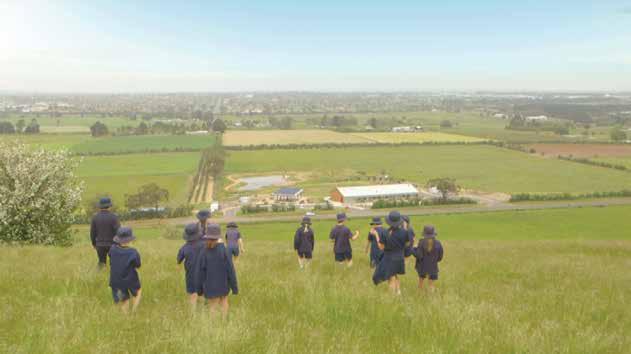
Explore the opportunities on offer for your family at Ballarat Grammar, from Kindergarten to Year 12.
School tours available any time by appointment, including our M tRowan Farm Campus (Year 4 and Ag/Hort studies).
admissions@bgs.vic.edu.au or (03) 5338 0830 bgs.vic.edu.au
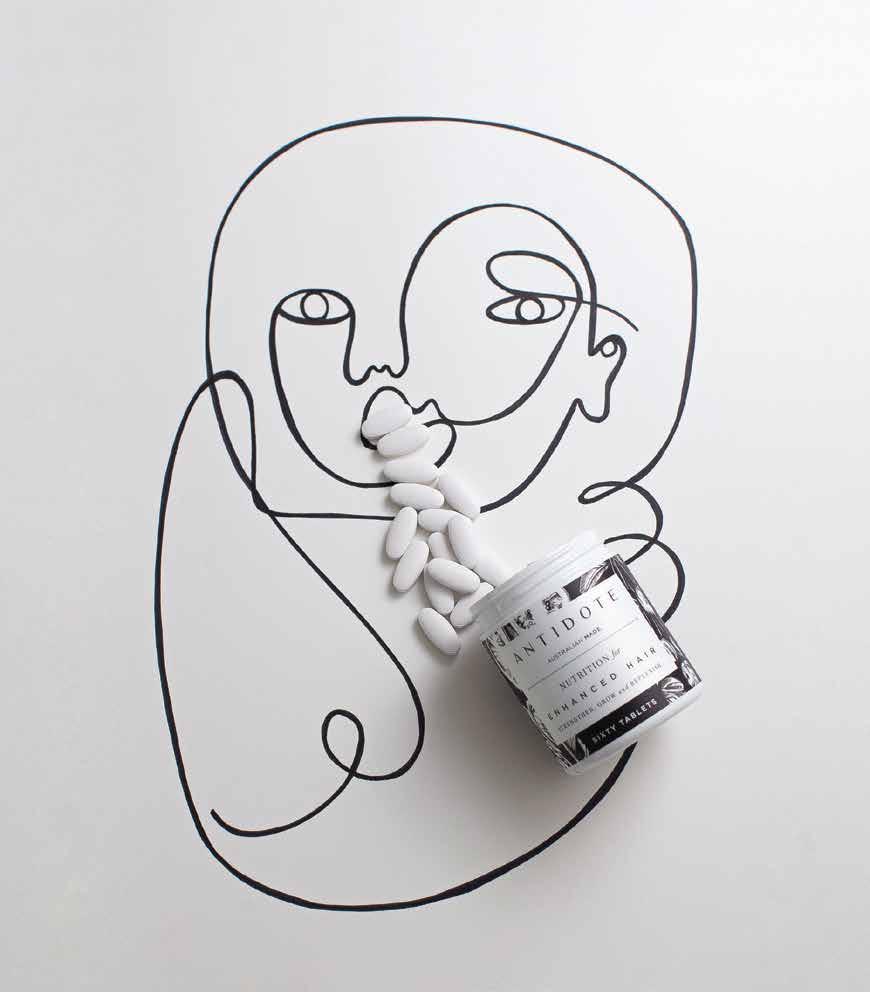
My Loreto Education
Words by Loreto College.
Loreto College has been educating girls, proudly and expertly, for almost 150 years. The vision of our founder, Mother Gonzaga Barry, for a “sensible school for girls” has evolved into a national network of Catholic girls’ education and a global network of Loreto and Mary Ward values and friendships.
In accordance with the Loreto mission, a Loreto education has changed significantly over the years to ensure that the education provided is congruent with the times. However, the vision to provide a Catholic education that liberates, empowers and motivates students to use their individual gifts with confidence, creativity and generosity in loving and responsible service remains at the heart of a Loreto education, now and into the future. Every year, Loreto welcomes back past pupils for the annual suite of decade reunions. It is at these gatherings of past pupils that the radiating value of a Loreto education that transcends time is most evident. There is no greater testament to the value of such an education than the words of past pupils themselves. Some examples are as follows:
On a Loreto education, lessons and advice…
"That girls can do anything! A strong sense that it is our responsibility to give to the world and make it a fairer, better place. In the words of Mary Ward, “do good and do it well”. I am forever grateful for my excellent education at Loreto College Ballarat." Michelle, Class of 1989 On being a Loreto woman…
"It meant growing up in an environment where I was always encouraged to do my best, stand up for what I believed in and trust my own voice.

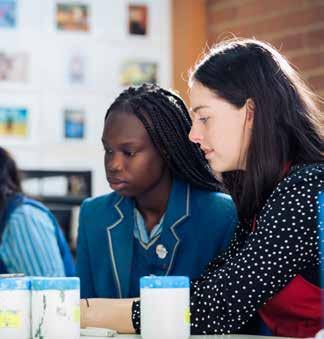
I’ve never doubted myself or my abilities in my professional life and I put that down to developing in an environment that encouraged me to shine and showed me that women should be in leadership positions, not just that they could be." Gemma, Class of 2009 "A preparedness to consider the needs of others and the confidence to step forward in situations where one can make a contribution." Anne, Class of 1969
"It connects me to women who have enriched their communities past, present and future." Annette, Class of 1979 On connecting with other Loreto women… "I’ve found that Loreto women have a deep sense of shared history and values, no matter which Loreto College they went to or what time they belonged to." Tabitha, Class of 1999
A Loreto education really is an education for life! Our sincere thanks to our valued past pupils for their words.
– Loreto student
www.loreto.vic.edu.au
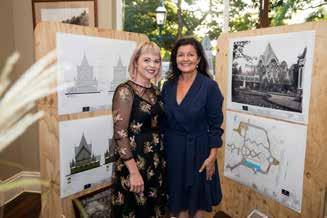
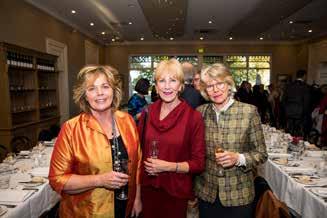
Sitting pretty on Ballarat’s historic Webster Street, Webster’s Market and Cafe is a slice of caffeienated paradise in country Victoria.
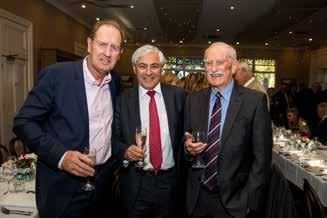
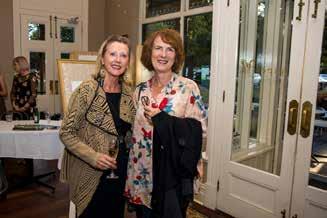


An attractive brunch spot with wooden floorboards and exposed-brick walls, Webster's is popular for all-day breakfast, It also does excellent specialty coffee by boutique Melbourne roaster Industry Beans, along with local beer and wines.
Enjoy our delicious new Winter menu.
Monday-Friday 7am-5pm Saturday-Sunday 8am-4pm
Websters Market and Cafe A 61 Webster St, Ballarat, VIC, 3350 E hello@webstersmarketandcafe.com P (03) 5331 2498


Bright Futures Scholarship
Words by Damascus College.
When families are in crisis, disaster strikes, or financial disadvantage is overwhelming, keeping kids in school and on track to succeed can be challenging if not impossible. Around the world, 124 million children and youth are not at school. We believe that a brighter future starts with an education and giving a child the opportunity to thrive at Damascus College is the aim of the Bright Futures Scholarship. Established in 2018, this scholarship, sponsored by the Sisters of Mercy (John Thirsk Estate), Fr Brendan Davey and Damascus College, is to support students and families who are experiencing financial or personal disadvantage, but continue to demonstrate a strong commitment to social justice activities as well as contributing to their local community; however, their current circumstances mean they are unable to afford a Catholic education. At the moment, this scholarship is awarded annually to one incoming Year 7 student, providing for 50 per cent tuition relief, and is awarded for the duration of the student’s enrolment at Damascus College (maximum of six years).
Primary School principals in the region support or endorse one Year 5 student per year from their Primary School community to be considered for this Damascus College scholarship. Now, a little information about the scholarship benefactors. John Thirsk was a notable sports journalist who was cared for by the Sisters of Mercy as a result of a family tragedy. The sisters provided John with an education and a safe place for him to return to throughout his life. He considered the Sisters as family and his bequest enabled them to continue their work of providing support to others like they had offered to John. The Sisters have entrusted these funds to Damascus College. Fr Brendan Davey grew up in Ballarat and was a priest of the diocese for over 60 years. Fr Brendan always had a great empathy for human vulnerability and valued the gift of education. Upon his death, he bequeathed Damascus College with funds to enable Catholic education to be made available to young people who may not otherwise be able to access it. The Bright Futures Scholarship honours the Christian spirit that prevailed through the work of Fr Brendan Davey and the Sisters of Mercy of Australia and Papua New Guinea. Bright Futures Fundraising Breakfast
Damascus College is excited to launch the Bright Futures Breakfast on Thursday 19 September 2019, which will be a new annual fundraising event for our alumni and wider community members. In holding this fundraising breakfast, the school is seeking to extend the Bright Futures Scholarship opportunity to more than one Year 7 student per year using the proceeds raised. We invite our alumni of Damascus College, Sacred Heart, St Paul’s and St Martin’s in the Pines, and the wider community to enjoy a sumptuous breakfast, network with other alumni and community members, and to hear from guest speakers who are recognised members of the community.
If you would like to financially contribute to the Bright Futures Scholarship, please contact Damascus College on 5337 2222 or email to info@damascus.vic.edu.au.
BRIGHT FUTURES FUNDRAISING BREAKFAST
PLEASE SAVE THE DATE Thursday 19 September 7am - 8.45am

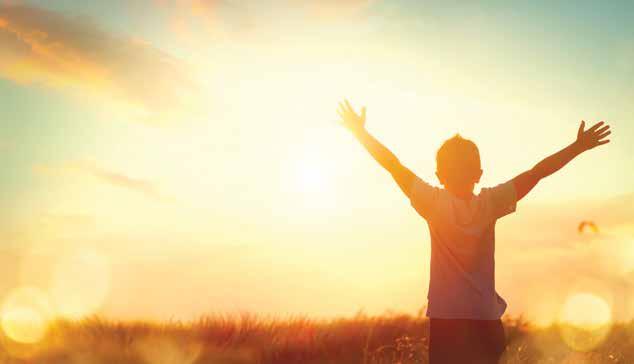
More details will be available later in 2019. Please visit damascus.vic.edu.au/past-students-reunions-events and complete the brief survey to help with planning and to stay informed







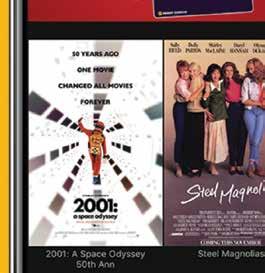


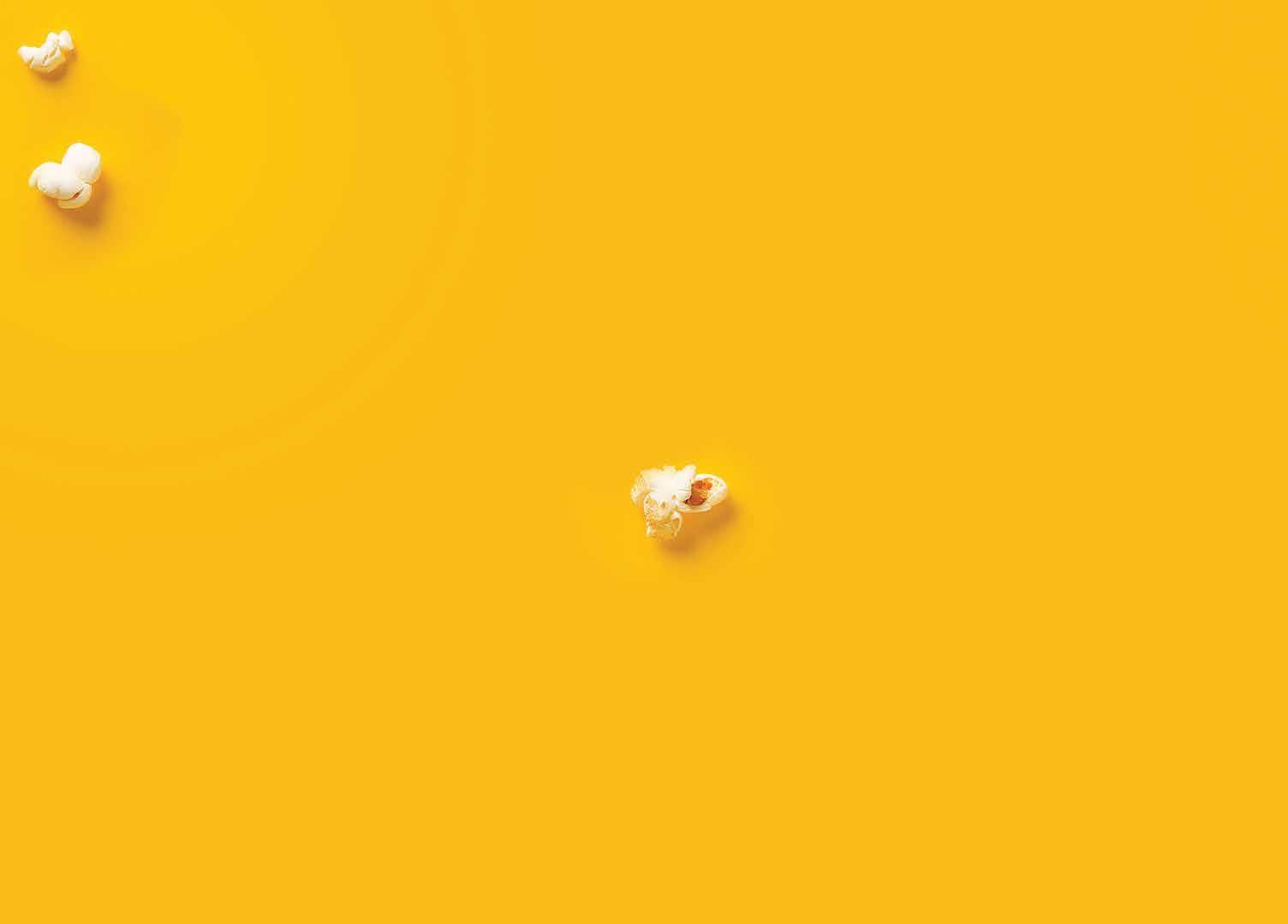
We Stand Together
Words by Ballarat Clarendon College.

The horrific events that occurred this year on 15 March in Christchurch, New Zealand, shocked us all. These tragedies prompted us, at Ballarat Clarendon College, to stand together and reaffirm our values as a school.
To honour and respect the victims and their families, the entire Sturt Street campus assembled on 3 April. Students from Years 5 to 12 and staff gathered on the oval to reflect and to hear from Head of Student Development, Dean Griffin; School Captain, Ibrahim Al-Ansari; and Principal, David Shepherd.
Over the years our school population has not only grown in number but also in its diversity. Many collegians or their parents were born outside Australia and have arrived from all corners of the globe, practising many different faiths. Being a member of this community is not based on the colour of a person’s skin, religious beliefs, socioeconomic status, or family background. Membership of our community requires individuals to value learning, to try their best, and to understand that being respectful when dealing with others is simply what it means to be a decent human being. “We believe that diversity is more than something to be accepted; it is something to be cherished,” said Dean Griffin on that day. He believes that a world without diversity diminishes the opportunity for learning. At Clarendon, we encourage exposure to different cultures and beliefs, which Mr Griffin said “keeps us vibrant”. As he also stated, “It is what keeps us curious. Perhaps, most importantly, it keeps us learning.”
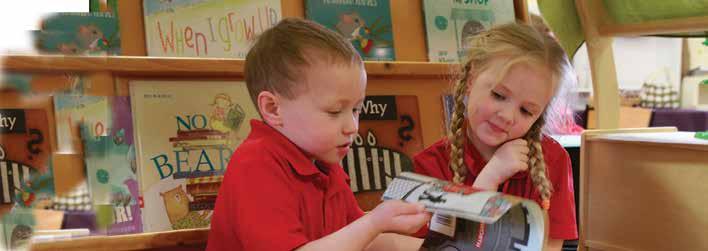
School Captains Olivia Rickard, Ibrahim Al-Ansari, and Zara Cox, wearing a touch of green in honor of the Christchurch victims.
Ibrahim Al-Ansari spoke of his experience as both an Iraqi and Kiwi, and now Australian, referring to it as “living as one person in two worlds”. Ibrahim’s parents moved from Iraq to Christchurch in search of a safer home to raise their family. Ibrahim was born there and later moved to Ballarat when he was 11 years old.
“We are inspired by the insistence in responding with unity to an act that was intended to divide,” Ibrahim said. He believes that although our Ballarat community may be smaller than others, we are an extremely diverse city. “I hope that one day the world becomes as lucky as we are,” he said. “Remember, in any community, as long as you demonstrate compassion towards others, you can live anywhere with anyone.” David Shepherd concluded the assembly by reaffirming our values as a school. “What we share with others – our humanity, our compassion, our capacity to evolve and grow – is far greater and far more powerful than any differences there may be between us” he said. “At Clarendon, diversity is an essential part of our DNA; it is a great strength of our community.”
Becoming Modern
In the early decades of the20thcentury, Australian women were becoming more visible in the visual arts than ever before. Increased access to art schools meant more women were able to become professional artists, showing their work and achieving exposure through publications such asthe magazine Art in Australia and its sister publication The Home.
Men continued to dominate the art world in Australia and women artists were often subjected to prejudice from their male counterparts and critics; Norman Lindsay once described artists Thea Proctor and Margaret Preston as "members of a lesser order of beings" . However, women became renowned for their bold and ground-breaking use of colour, line and form and bright new approaches to the depiction of Australian themes.
It was also an era which saw many women travelling to Europe to study painting, sculpture and printmaking at forward-thinking art schools in London and Paris.
As a result, they played a key role in introducing concepts such as Post Impressionism, Abstraction and Modernism to Australian audiences. Becoming Modern: Australian women artists 1920-1950 is a celebration of the tenacity and innovation of Australian women artists and is drawn almost entirely from the Art Gallery of Ballarat collection.
From Victorian ladies to modern women
Trailblazing women of the late 19th and early 20th centuries laid the groundwork forsubsequentgenerations of female artists. Although women were encouraged to take upartformswhich were considered ‘feminine’, they were able to push the boundaries of their practiceby participating in en plein air painting in the Australian bush, engaging in new printmaking techniques and trends emerging from overseas, and contributing towards the scientific study of Australia’s flora and fauna through the collection and depiction of specimens. From the late 19th century, technical art schools accepted enrolment from both sexes, giving women the opportunity to engage in the commercial art world and to gain employment as professional artists in the fields of fashion and design.
The First World War had an undeniable impact on the artistic output of many women, who depicted their experience of war from the perspective of wives, mothers and volunteers.
Depicting the New Woman The New Woman was a term coined in the late 19th century to describe women who increasingly sought independence, education and social reform by challenging the traditional gender roles of women in society. The term continued to hold relevance into the 20th century as women continued to gain opportunities in education and employment, and therefore to achieve independence. Artists abroad Modernism impacted the entire Western art world by prompting a departure from classical and traditional forms. Australia followed new movements emerging from Europe, such as Post Impressionism, Fauvism and Cubism, which experimented with form and colour. Many Australian artists travelled overseas to learn from masters in their chosen field and Modernism subsequently impacted many aspects of Australian life in the early decades of the 20th century including design, literature, architecture and fashion.
A feminine aesthetic
In the 19th century, the depiction of flowers was considered an acceptable pastime for women, and it was a tradition which continued into the 20th century. Margaret Preston ushered the genre into a new era by painting flowers in a Modernist style and depicting Australian flora using Japanese-inspired woodblock printing. Building Australia
The period between the two world wars saw a noticeable change in the depiction of the Australian landscape and society, as artists explored concepts of tonalism, colour theory and Abstraction. To read the full article exploring Becoming Modern: Australian Women Artists 1920-1950 please visit the Uncover Victoria blog www.uncovermagazine.com.au
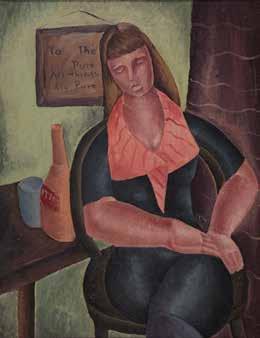
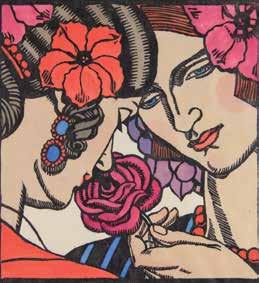
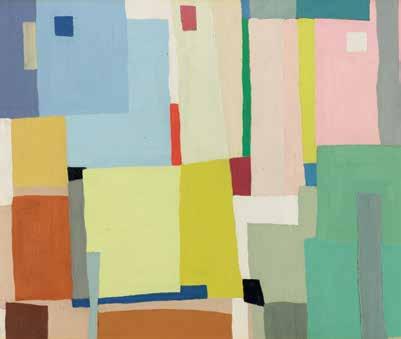
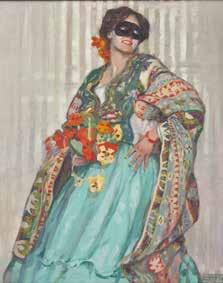
(1) Yvonne Atkinson, To the pure, all things are pure 1936 (5) Grace Crowley, Abstract painting ca. 1950 (3) Thea Proctor, The rose 1927 (4) Eveline Syme, San Domenico, Siena 1931 (5) Hilda Rix Nicholas, The masquerader ca. 1913
Publication Partner

Live, Love & Decorate
By Jules from Batch's Furniture.
To see more styling tips visit the Batch's Instagram page @batchsfurniture or website www.batchs.com.au
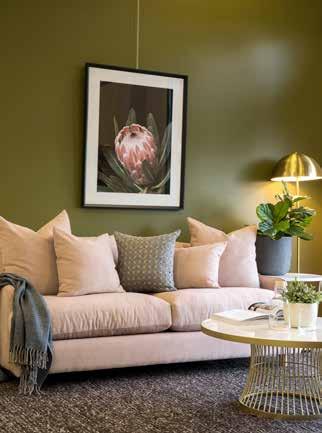
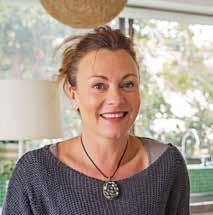
Can you describe this space for us?
This space is all about relaxation. The brief was to create a beautiful lounge space that was luxurious, warm and welcoming. We decided on a softer blush pink sofa that looked relaxed, comfortable and inviting, featuring a deeper seat with feather-wrapped foam cushions. The Haymes Paint olive-green wall introduced warmth and sophistication. Marble tables and a gold floor lamp added a little luxe whilst being practical. Pops of greenery introduced texture and balanced the framed protea artwork, pulling the room together. The introduction of the grey basket and scatter cushions added the final layer of depth and interest. It became a perfect living room in which to relax, enjoy a quiet read, and have a glass of bubbles. Who are your biggest style influences?
Multi-award winning Los Angeles-based interior designer Martyn Lawrence Bullard is my absolute guru. Renowned for his broad range of styles and eclectic, yet sophisticated interiors, I just love his flamboyant, brave clashes with rich colour and heavy pattern. What are some upcoming trends you see emerging? Curves – It’s all about curves, soft angles and organic shapes, giving tables, sofas and armchairs a more fluid shape. Organic and soothing, curves provide softness and help your space feel more relaxed and inviting.
Handcrafted – There is an increased focus on natural and handcrafted elements that are dominated by earthy colours such as warm beige, burnt orange and terracotta, offset by soothing shades of green. Warm tweed textures, rattan, velvet, leather, linen and terrazzo all blend together. Maximalist – Maximalist elements and boho style merge to create an eclectic approach to glamour. Coffee, console and side tables featuring marble tops will be key and add an element of sophistication as well as practicality. Luxury and glamour are created by incorporating metals – silver, gold, brass or copper – into furniture, or as stand-alone pieces. Pattern will continue to inspire, embracing contrasting prints and textures. With glamorous wallpapers and velvet cushions, the maximalist interior look is all about balancing eclectic finds with carefully thought-out design.
In terms of interiors, what are you personally loving at the minute? Do you have a favourite piece for this season? I’ve been having so much fun with ottomans in different shapes and sizes. Featured in complimentary fabrics ottomans instantly add pops and personality to your space. An ottoman at the end of a bed can provide much needed storage and seating, and work back with bedheads to introduce a lovely luxurious feel. Round ottomans work well as coffee tables, side tables, extra seating or a place to rest your weary feet. What can we expect from the Batch’s styling service?
Our interior styling service ranges from styling a complete interior to simply freshening up zones within your home. Bringing an interior stylist into your home provides a qualified pair of eyes to assess not only what looks good in a room but also how the space will best function. We conduct a home visit or work from photographs and floor plans brought into our showroom. From there we’ll offer expert advice and guidance, providing you with mood boards, colour palettes, furniture recommendations and a final proposal that will bring your dream home to life.










